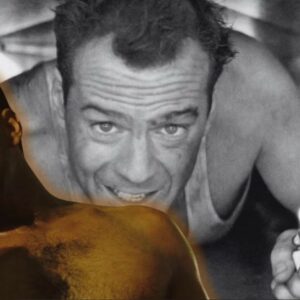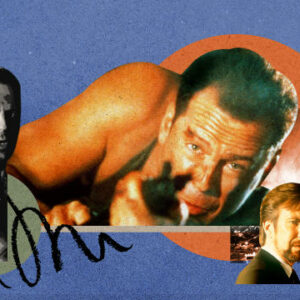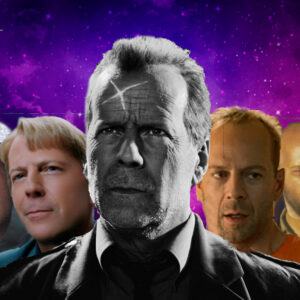Daniel Radcliffe’s journey from the bespectacled wizard in “Harry Potter” to a versatile actor with a diverse portfolio of roles is nothing short of remarkable. His ability to morph into different characters is largely attributed to the detailed and nuanced work of costume and makeup design. This article explores the artistry behind Radcliffe’s on-screen transformations, examining how wardrobe choices and makeup techniques play a crucial role in bringing his characters to life.
1. Introduction
Daniel Radcliffe’s career, while widely known for his role as Harry Potter, is marked by a variety of performances that showcase his range and depth as an actor. From playing a troubled writer in “The Woman in Black” to a charmingly awkward magician in “Now You See Me 2,” Radcliffe has shown an impressive ability to adapt to diverse roles. Central to these transformations are the costume and makeup choices that help define each character’s persona. This article delves into the meticulous process behind these elements, revealing how they contribute to the immersive experience of Radcliffe’s performances.
2. The Role of Costume Design in Character Transformation
2.1. Understanding Costume Design
Costume design is more than just choosing outfits that fit a character’s time period or setting; it’s about reflecting a character’s personality, mood, and evolution through their wardrobe. The process involves collaboration between the costume designer and the actor to ensure that the clothing enhances the storytelling.
2.2. Case Study: Harry Potter
For Daniel Radcliffe, the iconic role of Harry Potter was not just about wearing glasses and a lightning scar. The costumes designed by Judianna Makovsky and later by Amanda Knight and Lisa Tomblin, were essential in shaping the character’s development throughout the series.
- Initial Design: In the earlier films, Harry’s costumes were relatively simple, reflecting his humble beginnings and the world of Hogwarts. The signature school uniform—consisting of a grey sweater, white shirt, black trousers, and a Gryffindor tie—was designed to fit into the magical yet grounded environment of the school.
- Character Evolution: As the series progressed, Harry’s wardrobe evolved to reflect his growing maturity. The designers used more textured fabrics and darker colors in the later films to signify his transition from a young student to a more seasoned wizard facing darker challenges.
2.3. Case Study: “The Woman in Black”
In “The Woman in Black,” Radcliffe’s character, Arthur Kipps, is a stark contrast to Harry Potter. Set in the Edwardian era, the costume design for this film, overseen by Jane Petrie, was pivotal in establishing the period’s atmosphere.
- Historical Accuracy: The costumes were meticulously researched to reflect the era’s fashion accurately. Arthur Kipps’ suits, waistcoats, and bowler hats were chosen to reflect his profession and social status, while also helping Radcliffe embody the character’s isolation and emotional turmoil.
- Symbolism: The use of muted colors and period-appropriate attire helped convey the somber tone of the film, enhancing Radcliffe’s portrayal of a man grappling with grief and supernatural elements.
3. The Art of Makeup Design
3.1. The Role of Makeup in Character Development
Makeup design plays a critical role in altering an actor’s appearance to fit a character. It involves creating looks that range from subtle enhancements to dramatic transformations. The process often includes working with prosthetics, aging makeup, and special effects to achieve the desired look.
3.2. Case Study: “Swiss Army Man”
In “Swiss Army Man,” Radcliffe’s role as Manny, a farting corpse with extraordinary abilities, required a significant makeup transformation. The film’s makeup design, led by Rebecca Halls, was crucial in making Manny’s character believable and humorous.
- Prosthetics and Effects: The makeup team used extensive prosthetics to create Manny’s decaying appearance, including detailed work on the character’s skin texture and other elements like the use of a fake beard and teeth to complete the look.
- Enhancing Performance: The elaborate makeup and prosthetics allowed Radcliffe to fully inhabit the bizarre character, enhancing the film’s comedic and surreal elements while adding depth to his performance.
3.3. Case Study: “Now You See Me 2”
In “Now You See Me 2,” Radcliffe played Walter Mabry, a tech mogul with a penchant for magic. The makeup and grooming for this character, overseen by Martin Samuel, were designed to reflect his wealth and eccentricity.
- Contemporary Style: The choice of sharp suits, styled hair, and precise grooming details were intended to emphasize Mabry’s status and personality. Subtle makeup touches were used to highlight Radcliffe’s youthful features while giving him a more polished and edgy appearance.
- Character Alignment: The makeup design complemented the character’s flamboyant and manipulative nature, enhancing Radcliffe’s portrayal of a man driven by ambition and deceit.
4. The Collaborative Process
4.1. Collaboration Between Actor and Designer
The transformation process involves close collaboration between Radcliffe and the costume and makeup designers. This partnership ensures that the final look aligns with the character’s personality and the film’s vision.
4.2. Rehearsals and Fittings
Costume fittings and makeup tests are essential steps in the process. These sessions allow designers to make adjustments based on Radcliffe’s feedback and ensure that the costumes and makeup function well on screen.
4.3. Actor’s Input
Radcliffe’s insights into his characters often influence the final design choices. His understanding of the character’s background and psychology helps designers create looks that are both authentic and effective.
5. Challenges and Innovations
5.1. Addressing Challenges
Designing costumes and makeup for a wide range of characters presents numerous challenges. For instance, ensuring that the costumes are both period-accurate and comfortable for the actor can be difficult. Makeup artists must also balance aesthetic requirements with practical considerations like durability and ease of application.
5.2. Innovations in Design
Advancements in materials and techniques have revolutionized costume and makeup design. Innovations such as 3D printing for prosthetics and high-definition fabrics for costumes have expanded the possibilities for creating realistic and intricate designs.
6. Conclusion
Daniel Radcliffe’s transformations into a myriad of characters are a testament to the artistry and skill involved in costume and makeup design. From the iconic Hogwarts uniforms to the elaborate prosthetics of a magical corpse, each design choice plays a crucial role in bringing Radcliffe’s characters to life. The meticulous attention to detail in costume and makeup not only enhances the visual appeal but also deepens the audience’s connection to the characters. Through the collaboration of talented designers and Radcliffe’s commitment to his roles, we are offered a glimpse into the enchanting world of film artistry and character portrayal.
In exploring these transformations, we gain a greater appreciation for the intricate processes that contribute to the magic of cinema. As Radcliffe continues to take on diverse and challenging roles, it will be exciting to see how costume and makeup design will continue to shape his performances and bring new characters to life.





